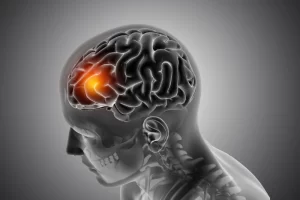 When it comes to health emergencies, few situations are as critical as a brain stroke. A brain stroke occurs when there is a sudden disruption in the blood supply to the brain, leading to a lack of oxygen and nutrients.
When it comes to health emergencies, few situations are as critical as a brain stroke. A brain stroke occurs when there is a sudden disruption in the blood supply to the brain, leading to a lack of oxygen and nutrients.
Prompt recognition and medical intervention are crucial to prevent lasting damage or even fatalities.
Today, we will explore the different types of brain strokes, their causes, symptoms, and the importance of seeking immediate medical attention.
Ischemic Stroke
The most common type of brain stroke is an ischemic stroke, accounting for approximately 85% of all cases. It occurs when a blood vessel supplying the brain becomes blocked by a blood clot or fatty deposits, often due to atherosclerosis.
This obstruction results in reduced blood flow, leading to cell death in the affected brain region.
Symptoms may include:
- sudden weakness,
- numbness,
- confusion,
- severe headache,
- and trouble speaking or understanding speech.
Hemorrhagic Stroke
Hemorrhagic strokes are less common but more dangerous, accounting for around 15% of all cases. This type of stroke occurs when a weakened blood vessel ruptures, causing bleeding within or around the brain.
The most common causes of hemorrhagic stroke are hypertension and cerebral aneurysms.
Symptoms may include:
- sudden and severe headache,
- nausea,
- vomiting,
- loss of consciousness,
- and neurological deficits.
Transient Ischemic Attack (TIA)
Often referred to as a “mini-stroke,” a transient ischemic attack is a temporary blockage of blood flow to the brain. While TIAs resolve on their own, they serve as a warning sign for potential full-blown strokes.
Symptoms of a TIA are similar to those of an ischemic stroke but typically last for a shorter duration, usually a few minutes to an hour.
Embolic Stroke
Embolic strokes occur when a blood clot or debris formed in one part of the body, such as the heart or neck arteries, breaks off and travels to the brain, blocking a blood vessel.
This type of stroke can cause sudden and severe symptoms, depending on the size and location of the clot.
Brain strokes are medical emergencies that demand immediate attention and care. Recognizing the warning signs and understanding the different types of strokes can help individuals and their loved ones respond quickly and seek appropriate medical assistance.
Remember, time is of the essence when it comes to strokes, as early treatment can significantly improve the chances of recovery and minimize potential long-term effects.
Picture Credit: Freepik
